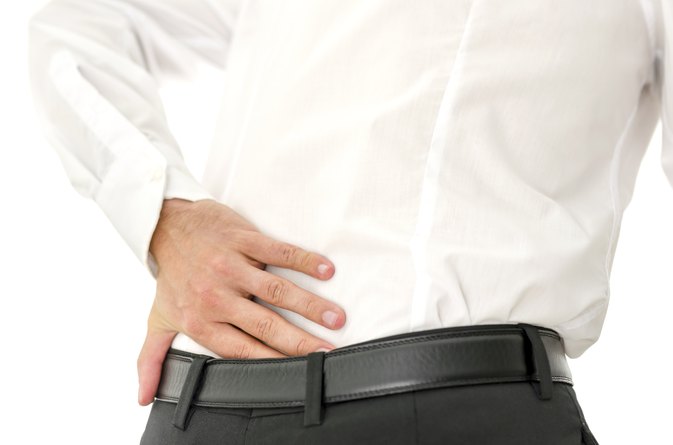Author
by
https://www.livestrong.com/article/245034-symptoms-of-an-l5-s1-degenerative-disc/
by
The vertebral column is both durable and flexible, allowing a person to move freely in many different directions. The vertebrae are separated from each other by intervertebral discs that act as cushions. Degenerative disc disease, or DDD, results when a disc begins to fail either as a result of trauma or from the normal aging process. The disc between the fifth lumbar vertebra and the first sacral vertebra is called the L5-S1 disc. Because the curve of the spine changes at this location, significantly more stress is placed on this disc than on the others in the low back area. This disc is frequently diagnosed with DDD and is a common cause of low back problems.
Low Back Pain
Pain in the back is often the primary complaint of patients seeking care for an L5-S1 degenerative disc. The pain is usually centralized and located quite low in the back. A degenerative disc frequently causes a low-level chronic type of pain with acute flare-ups of moderate to severe pain when the disc is reaggravated. The pain is worse with sitting and is often relieved with walking. The disc itself is poorly innervated but adjoining structures, such as muscles, tendons and ligaments, have many nerve endings. Damage to the disc often causes these nerves to send signals of pain.
Muscle Spasms
As pain increases, especially during an acute flare-up, the muscles of the low back begin to spasm to try to splint the area and provide added stability to the low back. The spasms are often the reason a person feels that his back has “gone out.” Some people get relief with gentle moist heat, as from a heating pad, and some require medication to quiet the spasms. The spasms are another symptom of a worsening disc: Treating the spasms alone will not fix the underlying problem.
Referred Pain
If the L5-S1 disc is reduced enough to pinch the nerves that exit the spinal cord, pain can be referred to the buttocks, hips or thighs. Treating the areas of referred pain will not reduce the symptoms; the disc causing the problem must be managed in order to get relief. Long-standing pressure to the nerve roots may result in numbness, tingling and other sensation changes to these regions. The Merck Manual notes that greater than 80 percent of disc ruptures affect L5 or S1 nerve roots. Appropriate treatment for DDD should be sought in the early stages.
Foot Drop
Nerves that have been compressed for a lengthy period by disc degeneration eventually stop sending signals from the brain to the muscles. If the muscles that flex the foot upward become significantly weakened or if there is a complete inability to perform this movement, it should be considered a red flag that an immediate examination by a physician is needed. Reducing the pressure on the nerves from the failing disc is crucial to regaining function.
https://www.livestrong.com/article/245034-symptoms-of-an-l5-s1-degenerative-disc/







No comments:
Post a Comment